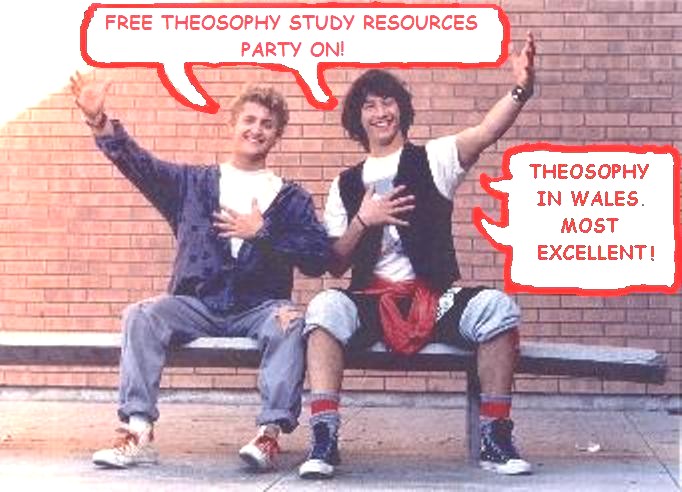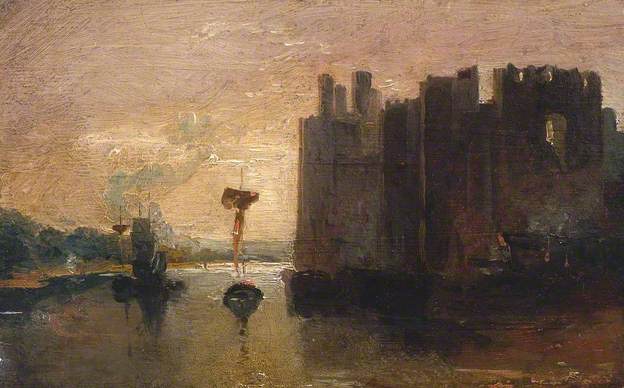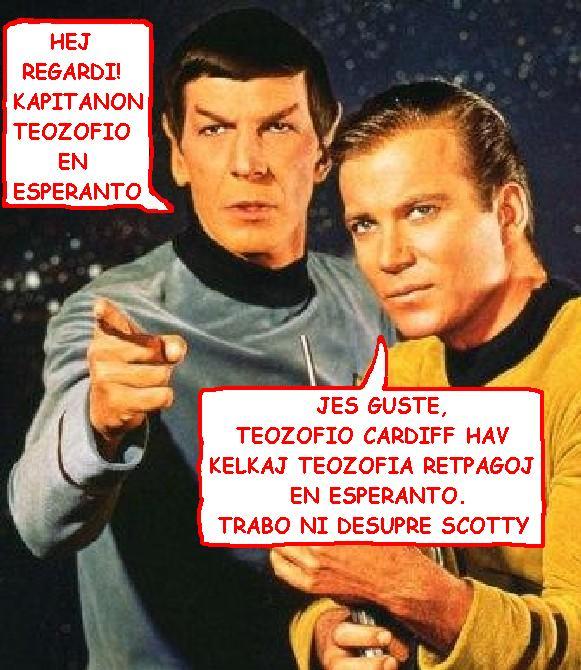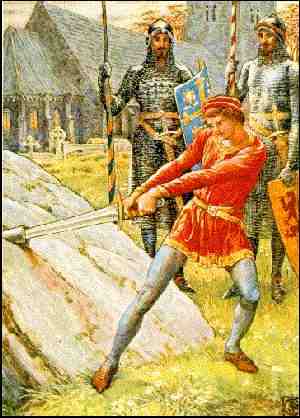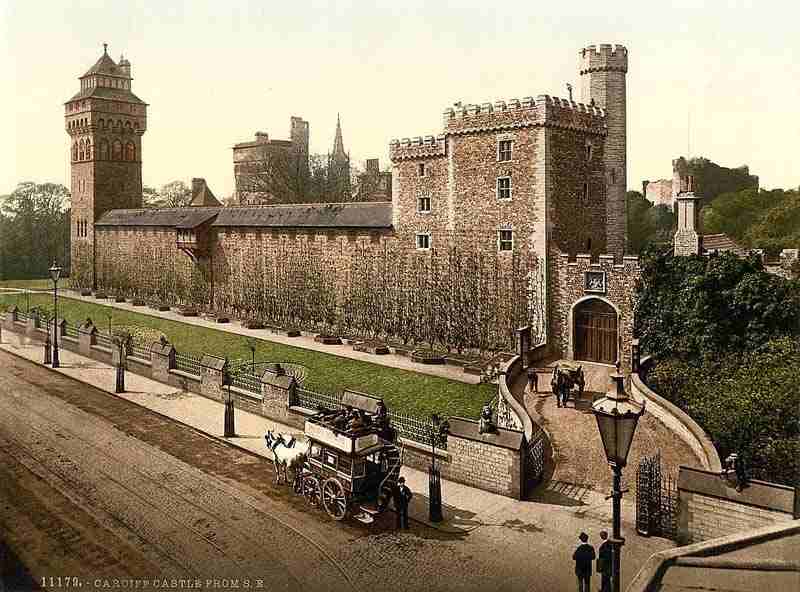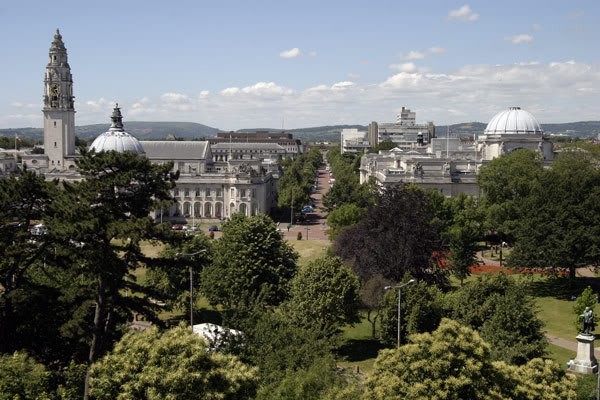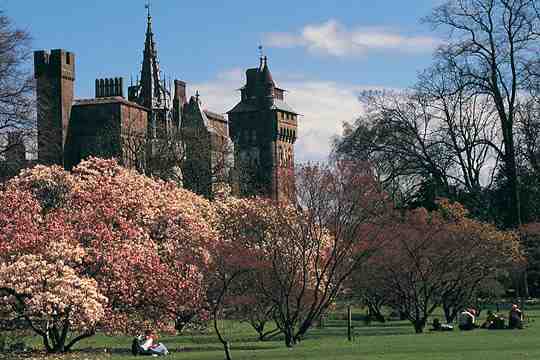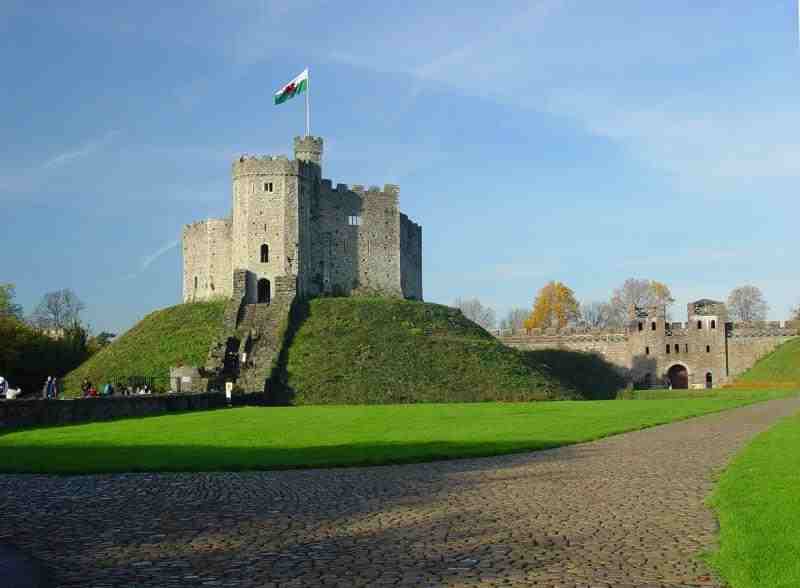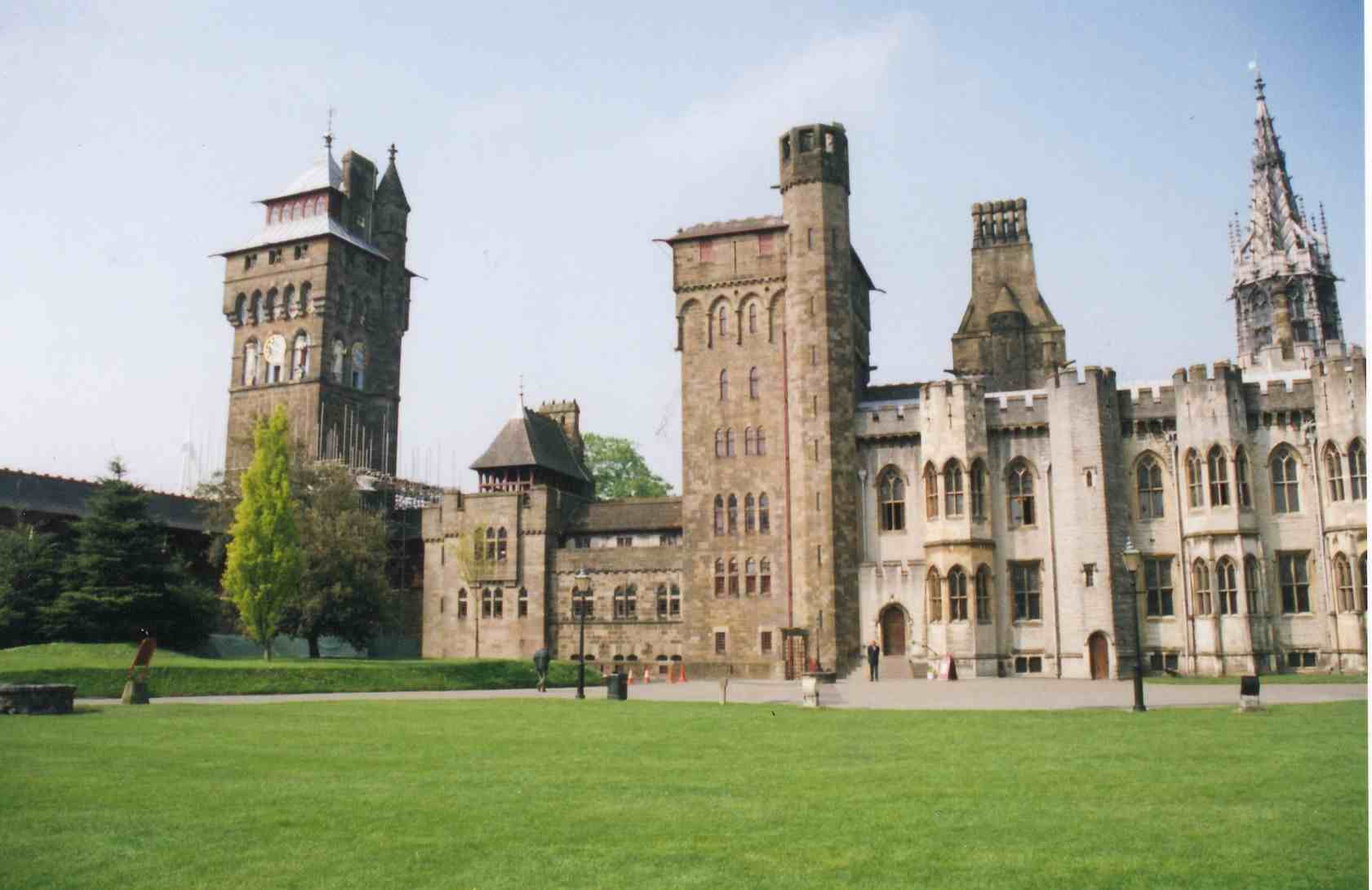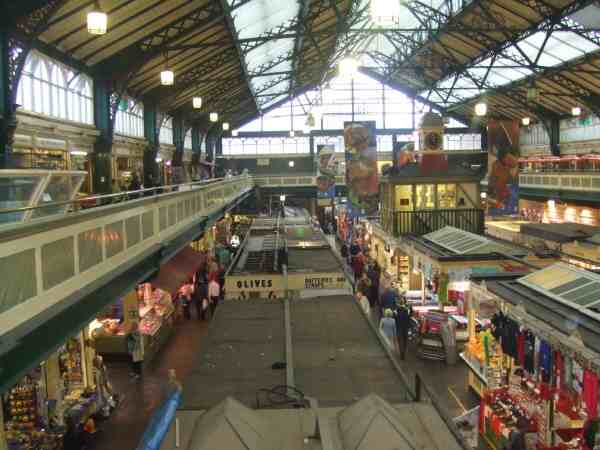THE
OF
THEOSOPHY
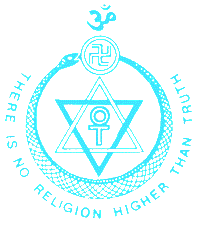
A Definitive Work on Theosophy
By
William Quan Judge
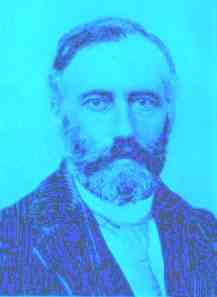
CHAPTER
17
Psychic
Phenomena
and
Spiritualism
In the history of psychical phenomena the records of
so-called "spiritualism" in Europe, America, and elsewhere hold an
important place. Advisedly I say that no term was ever more misapplied than
that of "spiritualism" to the cult in Europe and America just
mentioned, inasmuch as there is nothing of the spirit about it.
The doctrines given in preceding chapters are those of
true spiritualism; the misnamed practises of modern mediums and so-called
spiritists constitute the Worship of the Dead, old-fashioned necromancy, in
fact, which was always prohibited by spiritual teachers. They are a gross
materializing of the spiritual idea, and deal with matter more than with its
opposite. This cult is supposed by some to have originated about forty years
ago in America at Rochester, N. Y., under the mediumship of the Fox sisters,
but it was known in Salem during the witchcraft excitement, and in Europe one
hundred years ago the same practises were pursued, similar phenomena seen,
mediums developed, and seances held.
For centuries it has been well known in India where it
is properly designated "bhuta worship," meaning the attempt to
communicate with the devil or Astral remnants of deceased persons. This should
be its name here also, for by it the gross and devilish, or earthly, parts of
man are excited, appealed to,
and communicated with. But the facts of the long
record of forty years in America demand a brief examination. These facts all
studious Theosophists must admit. The theosophical explanation and deductions,
however, are totally different from those of the average spiritualist. A
philosophy has not been evolved in the ranks or literature of spiritualism;
nothing but theosophy will
give the true explanation, point out defects, reveal
dangers, and suggest remedies.
As it is plain that clairvoyance, clairaudience,
thought-transference, prophecy, dream and vision, levitation, apparitional
appearance, are all powers that have been known for ages, the questions most
pressing in respect to spiritualism are those relating to communication with
the souls of those who have left this earth and are now disembodied, and with
unclassified spirits who have not been embodied here but belong to other
spheres. Perhaps also the question of materialization of forms at seances
deserves some attention.
Communication includes trance-speaking, slate and
other writing, independent voices in the air, speaking through the physical
vocal organs of the medium, and precipitation
of written messages out of the air. Do the mediums
communicate with the spirits of the dead? Do our departed friends perceive the
state of life they have left, and do they sometimes return to speak to and with
us?
The answers are intimated in foregoing chapters. Our
departed do not see us here. They are relieved from the terrible pang such a
sight would inflict. Once in a while a pure-minded, unpaid medium may ascend in
trance to the state in which a deceased soul is, and may remember some bits of
what was there heard;
but this is rare. Now and then in the course of
decades some high human spirit may for a moment return and by unmistakable
means communicate with mortals.
At the moment of death the soul may speak to some
friend on earth before the door is finally shut. But the mass of communications
alleged as made day after day through mediums are from the astral unintelligent
remains of men, or in many
cases entirely the production of, invention,
compilation, discovery, and collocation by the loosely attached Astral body of
the living medium. Certain objections arise to the theory that the spirits of
the dead communicate.
Some are:
I. At no time have these spirits given the laws
governing any of the phenomena, except in a few instances, not accepted by the
cult, where the theosophical theory was advanced. As it would destroy such
structures as those erected by A. J. Davis, these particular spirits fell into
discredit.
II. The spirits disagree among themselves, one stating
the after-life to be very different from the description by another. These
disagreements vary with the medium and the supposed theories of the deceased
during life. One spirit admits reincarnation and others deny it.
III. The spirits have discovered nothing in respect to
history, anthropology, or other important matters, seeming to have less ability
in that line than living men; and although they often claim to be men who lived
in older civilizations, they show ignorance thereupon or merely repeat recently
published discoveries.
IV. In these forty years no rationale of phenomena nor
of development of mediumship has been obtained from the spirits. Great
philosophers are reported as speaking through mediums, but utter only drivel
and merest commonplaces.
V. The mediums come to physical and moral grief, are
accused of fraud, are shown guilty of trickery, but the spirit guides and
controls do not interfere to either prevent or save.
VI. It is admitted that the guides and controls
deceive and incite to fraud.
VII. It is plainly to be seen through all that is
reported of the spirits that their assertions and philosophy, if any, vary with
the medium and the most advanced thought of living spiritualists.
From all this and much more that could be adduced, the
man of materialistic science is fortified in his ridicule, but the theosophist
has to conclude that the entities, if there be any communicating, are not human
spirits, and that the
explanations are to be found in some other theories.
Materialization of a form out of the air, independent
of the medium's physical body, is a fact. But it is not a spirit. As was very
well said by one of the "spirits" not flavoured by spiritualism, one
way to produce this phenomenon is by the accretion of electrical and magnetic
particles into one mass upon which matter is aggregated and an image reflected
out of the Astral sphere.
This is the whole of it; as much a fraud as a collection
of muslin and masks. How this is accomplished is another matter. The spirits
are not able to tell, but an attempt has been made to indicate the methods and
instruments in former chapters. The second method is by the use of the Astral
body of the living
medium. In this case the Astral form exudes from the
side of the medium, gradually collects upon itself particles extracted from the
air and the bodies of the sitters present, until at last it becomes visible.
Sometimes it will resemble the medium; at others it
bears a different appearance. In almost every instance dimness of light is
requisite because a high light would disturb the Astral substance in a violent
manner and render the projection difficult. Some
so-called materializations are hollow mockeries, as
they are but flat plates of electrical and magnetic substance on which pictures
from the Astral Light are reflected. These seem to be the faces of the dead,
but they are simply pictured illusions.
If one is to understand the psychic phenomena found in
the history of "spiritualism" it is necessary to know and admit the
following:
I. The complete heredity of man astrally, spiritually,
and psychically, as a being who knows, reasons, feels, and acts through the
body, the Astral body, and the soul.
II. The nature of the mind, its operation, its powers;
the nature and power of imagination; the duration and effect of impressions.
Most important in this is the persistence of the slightest impression as well
as the deepest; that every impression produces a picture in the individual
aura; and that by means of this a connection is established between the auras
of friends and relatives old, new, near, distant, and remote in degree: this
would give a wide range of possible sight to a clairvoyant.
III. The nature, extent, function, and power of man's
inner Astral organs and faculties included in the terms Astral body and Kama.
That these are not hindered from action by trance or sleep, but are increased
in the medium when entranced; at the same time their action is not free, but
governed by the mass chord of thought among the sitters, or by a predominating
will, or by the presiding devil behind the scenes; if a sceptical scientific
investigator be present, his mental attitude may totally inhibit the action of
the medium's powers by what we might call a freezing process which no English
terms will adequately describe.
IV. The fate of the real man after death, his state,
power, activity there, and his relation, if any, to those left behind him here.
V. That the intermediary between mind and body -- the
Astral body -- is thrown off at death and left in the Astral light to fade
away; and that the real man goes to Devachan.
VI. The existence, nature, power, and function of the
Astral light and its place as a register in Nature. That it contains, retains,
and reflects pictures of each and every thing that happened to anyone, and also
every thought; that it permeates the globe and the atmosphere around it; that
the transmission of vibration through it is practically instantaneous, since
the rate is much quicker than that of electricity as now known.
VII. The existence in the Astral light of beings not
using bodies like ours, but not human in their nature, having powers,
faculties, and a sort of consciousness of their own; these include the
elemental forces or nature sprites divided into many degrees, and which have to
do with every operation of Nature and every motion of the mind of man. That
these elementals act at seances automatically in their various departments, one
class presenting pictures, another producing sounds, and others depolarizing
objects for the purposes of apportation. Acting with them in this Astral sphere
are the soulless men who live in it. To these are to be ascribed the
phenomenon, among others, of the "independent voice," always sounding
like a voice in a barrel just because it is made in a vacuum which is
absolutely necessary for an entity so far removed from spirit. The peculiar
timbre of this sort of voice has not been noticed by the spiritualists as
important, but it is extremely significant in the view of occultism.
VIII. The existence and operation of occult laws and
forces in nature which may be used to produce phenomenal results on this plane;
that these laws and forces may be put into operation by the subconscious man
and by the elementals either consciously or unconsciously, and that many of
these occult operations are automatic in the same way as is the freezing of
water under intense cold or the melting of ice under heat.
IX. That the Astral body of the medium, partaking of
the nature of the Astral substance, may be extended from the physical body, may
act outside of the latter, and may also extrude at times any portion of itself
such as hand, arm, or leg and thereby move objects, indite letters, produce
touches on the body, and so on ad infinitum. And that the Astral body of any
person may be made to feel sensation, which, being transmitted to the brain,
causes the person to think he is touched on the outside or has heard a sound.
Mediumship is full of dangers because the Astral part
of the man is now only normal in action when joined to the body; in distant
years it will normally act without a body as it has in the far past. To become
a medium means that you have to become disorganized physiologically and in the
nervous system, because through the latter is the connection between the two
worlds.
The moment the door is opened all the unknown forces
rush in, and as the grosser part of nature is nearest to us it is that part
which affects us most; the lower nature is also first affected and inflamed
because the forces used are from that part of us.
We are then at the mercy of the vile thoughts of all
men, and subject to the influence of the shells in Kama Loka. If to this be
added the taking of money for the practice of mediumship, an additional danger
is at hand, for the things of the spirit and those relating to the Astral world
must not be sold. This is
the great disease of American spiritualism which has
debased and degraded its whole history; until it is eliminated no good will
come from the practice; those who wish to hear truth from the other world must
devote themselves to truth and leave all considerations of money out of sight.
To attempt to acquire the use of the psychic powers
for mere curiosity or for selfish ends is also dangerous for the same reasons
as in the case of mediumship. As the civilization of the present day is selfish
to the last degree and built on the personal element, the rules for the
development of these powers
in the right way have not been given out, but the
Masters of Wisdom have said that philosophy and ethics must first be learned
and practised before any development of the other department is to be indulged
in; and their condemnation of the wholesale development of mediums is supported
by the history of spiritualism, which is one long story of the ruin of mediums
in every direction.
Equally improper is the manner of the scientific
schools which without a thought for the true nature of man indulge in
experiments in hypnotism in which the subjects are injured for life, put into
disgraceful attitudes, and made to do things for the satisfaction of the
investigators which would never be done by
men and women in their normal state. The Lodge of the
Masters does not care for Science unless it aims to better man's state morally
as well as physically, and no aid will be given to Science until she looks at
man and life from the moral and spiritual side. For this reason those who know
all about the psychical world, its denizens and laws, are proceeding with a
reform in morals and
philosophy before any great attention will be accorded
to the strange and seductive phenomena possible for the inner powers of man.
And at the present time the cycle has almost run its
course for this century. Now, as a century ago, the forces are slackening; for
that reason the phenomena of spiritualism are lessening in number and volume;
the Lodge hopes by the time the next tide begins to rise that the West will
have gained some right knowledge of the true philosophy of Man and Nature, and
be then ready to bear the lifting of the veil a little more. To help on the
progress of the race in this direction is the object of this book, and with
that it is submitted to its readers in every part of the world.
______________________
THE
OF
THEOSOPHY

Find out more about
Theosophy with these links
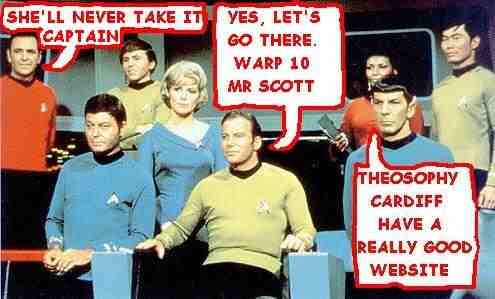
The Cardiff Theosophical Society Website
The
National Wales Theosophy Website
If you run a Theosophy Group, please feel free
to use any of the material on this site
The Most Basic Theosophy
Website in the Universe
A quick overview of Theosophy
and the Theosophical Society
If you run a Theosophy Group you
can use this as an introductory handout.
Theosophy Cardiff’s Instant Guide
One liners and quick explanations
H P Blavatsky is usually
the only
Theosophist that
most people have ever
heard of. Let’s
put that right
The Voice of the Silence Website
An Independent Theosophical Republic
Links to Free Online Theosophy
Study Resources; Courses, Writings,
The main criteria
for the inclusion of
links on this
site is that they have some
relationship
(however tenuous) to Theosophy
and are
lightweight, amusing or entertaining.
Topics include
Quantum Theory and Socks,
Dick Dastardly and Legendary Blues Singers.
A selection of
articles on Reincarnation
Provided in
response to the large
number of
enquiries we receive at
Cardiff Theosophical
Society on this subject
Theosophy Cardiff Nirvana Pages
The Voice of the Silence Website
Caernarvon Castle,
North Wales. circa 1798
Joseph Mallord
William Turner (1775‑1851)
This is for
everyone, you don’t have to live
in Wales to
make good use of this Website
The Seven
Principles of Man
By
Annie Besant
No
Aardvarks were harmed in the
The Spiritual Home of Urban Theosophy
The Earth Base for Evolutionary Theosophy
Reincarnation
This guide has been included in response
to the number of enquiries we receive on this
subject at Cardiff
Theosophical Society
From A Textbook
of Theosophy By C W Leadbeater
How We Remember our Past Lives
Life after Death & Reincarnation
The Slaughter of the
a great demand by the public for lectures on
Reincarnation
Classic Introductory Theosophy Text
A Text Book of Theosophy By C
What Theosophy Is From the Absolute to Man
The Formation of a Solar System The Evolution of Life
The Constitution of Man After Death
Reincarnation
The Purpose of Life The Planetary Chains
The Result of Theosophical Study
The Occult World
By
Alfred Percy
Sinnett
The Occult
World is an treatise on the
Occult and
Occult Phenomena, presented
in readable style, by an early giant of
the
Theosophical Movement.
Preface to the American Edition Introduction
Occultism and its Adepts The Theosophical Society
First Occult Experiences Teachings of Occult Philosophy
Later Occult Phenomena Appendix
by
Annie Besant
THE PHYSICAL PLANE THE ASTRAL PLANE
KÂMALOKA THE MENTAL PLANE DEVACHAN
THE BUDDHIC AND NIRVANIC PLANES
THE THREE KINDS OF KARMA COLLECTIVE KARMA
THE LAW OF SACRIFICE MAN'S
ASCENT
______________________
Annie Besant Visits Cardiff 1924
The Theosophy Cardiff Nirvana Pages
National Wales Centre for Theosophy
Blavatsky Wales Theosophy Group
______________________
_______________________
Theosophy Cardiff Cancels its Affiliation
to the Adyar Based Theosophical Society
and becomes an independent body within
the Worldwide Theosophical Movement
Theosophy Birmingham (England)
The Birmingham Annie Besant Lodge
Theosophy Cardiff has links with the
__________________
The Theosophy Cardiff
Glastonbury Pages
The Theosophy Cardiff Guide to
The Theosophy Cardiff Guide to
The Theosophy Cardiff Guide to
The Terraced Maze of Glastonbury Tor
Glastonbury and
Joseph of Arimathea
The Grave of King Arthur & Guinevere
Views of Glastonbury High Street
The Theosophy Cardiff Guide to
__________________
Camberley, Surrey,
England GU15 2LF
Concerns about
the fate of the wildlife as
Tekels Park is to
be Sold to a Developer
Concerns are
raised about the fate of the
wildlife as The Spiritual
Retreat,
Tekels Park in
Camberley, Surrey,
England is to be
sold to a developer.
Tekels Park is a
50 acre woodland park,
purchased
for the Adyar
Theosophical
In addition to
concern about the park,
many are worried about the
future
of the Tekels
Park Deer as they
Confusion as the Theoversity moves
out of
Tekels Park to Southampton,
Glastonbury &
Chorley in Lancashire while the
leadership claim
that the Theosophical Society will
carry on using
Tekels Park despite its sale to a developer
Anyone planning a
“Spiritual” stay at the
Tekels Park Guest
House should be aware of the sale.
Future of Tekels Park Badgers in Doubt
Party On! Tekels Park Theosophy NOT
Tekels Park & the Loch Ness Monster
A Satirical view of
the sale of Tekels Park
in Camberley,
Surrey to a developer
The Toff’s Guide to the Sale of Tekels Park
What the men in
top hats have to
say about the
sale of Tekels Park
__________________________
An Outline of Theosophy
Charles Webster Leadbeater
Theosophy - What it is How is it Known?
The Method of Observation General Principles
The Three Great Truths Advantage Gained from this Knowledge
The Deity
The Divine Scheme The Constitution of Man
The True Man
Reincarnation
The Wider Outlook
Death Man’s Past and Future Cause and Effect
______________________________
A B C D EFG H IJ KL M N OP QR S T UV WXYZ
Complete Theosophical Glossary in Plain Text Format
1.22MB
Quick Explanations with Links to More Detailed Info
What is Theosophy ? Theosophy Defined (More Detail)
Three Fundamental Propositions Key Concepts of Theosophy
Cosmogenesis Anthropogenesis Root Races
Ascended Masters After Death States
The Seven Principles of Man Karma
Reincarnation Helena Petrovna Blavatsky
Colonel Henry Steel Olcott William Quan Judge
The Start of the Theosophical
Society
History of the Theosophical
Society
Theosophical Society Presidents
History of the Theosophical
Society in Wales
The Three Objectives of the
Theosophical Society
Explanation of the Theosophical
Society Emblem
The Theosophical Order of
Service (TOS)
Glossaries of Theosophical Terms
Index of Searchable
Full Text Versions of
Definitive
Theosophical Works
H P Blavatsky’s Secret Doctrine
Isis Unveiled by H P Blavatsky
H P Blavatsky’s Esoteric Glossary
Mahatma Letters to A P Sinnett 1 - 25
A Modern Revival of Ancient Wisdom
(Selection of Articles by H P Blavatsky)
The Secret Doctrine – Volume 3
A compilation of H P Blavatsky’s
writings published after her death
Esoteric Christianity or the Lesser Mysteries
The Early Teachings of The Masters
A Collection of Fugitive Fragments
Fundamentals of the Esoteric Philosophy
Mystical,
Philosophical, Theosophical, Historical
and Scientific
Essays Selected from "The Theosophist"
Edited by George Robert Stow Mead
From Talks on the Path of Occultism - Vol. II
In the Twilight”
Series of Articles
The In the Twilight”
series appeared during
1898 in The
Theosophical Review and
from 1909-1913 in The Theosophist.
compiled from
information supplied by
her relatives and friends and edited by A P Sinnett
Letters and
Talks on Theosophy and the Theosophical Life
Obras Teosoficas En Espanol
Theosophische Schriften Auf Deutsch
An Outstanding
Introduction to Theosophy
By a student of
Katherine Tingley
Elementary Theosophy Who is the Man? Body and Soul
Body, Soul and Spirit Reincarnation Karma
Nature is infinite in space and time --
boundless and eternal, unfathomable and ineffable. The all-pervading essence of
infinite nature can be called space, consciousness, life, substance, force,
energy, divinity -- all of which are fundamentally one.
2) The finite and the infinite
Nature is a unity in diversity, one in
essence, manifold in form. The infinite whole is composed of an infinite number
of finite wholes -- the relatively stable and autonomous things (natural
systems or artefacts) that we observe around us. Every natural system is not only
a conscious, living, substantial entity, but is consciousness-life-substance,
of a particular range of density and form. Infinite nature is an abstraction,
not an entity; it therefore does not act or change and has no attributes. The
finite, concrete systems of which it is composed, on the other hand, move and
change, act and interact, and possess attributes. They are composite,
inhomogeneous, and ultimately transient.
3) Vibration/worlds within worlds
The one essence manifests not only in
infinitely varied forms, and on infinitely varied scales, but also in
infinitely varying degrees of spirituality and substantiality, comprising an
infinite spectrum of vibration or density. There is therefore an endless series
of interpenetrating, interacting worlds within worlds, systems within systems.
The energy-substances of higher planes or
subplanes (a plane being a particular range of vibration) are relatively more
homogeneous and less differentiated than those of lower planes or subplanes.
Just as boundless space is comprised of
endless finite units of space, so eternal duration is comprised of endless
finite units of time. Space is the infinite totality of worlds within worlds,
but appears predominantly empty because only a tiny fraction of the
energy-substances composing it are perceptible and tangible to an entity at any
particular moment. Time is a concept we use to quantify the rate at which
events occur; it is a function of
change and motion, and presupposes a
succession of cause and effect. Every entity is extended in space and changes
'in time'.
All change (of position, substance, or
form) is the result of causes; there is no such thing as absolute chance.
Nothing can happen for no reason at all for nothing exists in isolation;
everything is part of an intricate web of causal interconnections and
interactions. The keynote of nature is harmony: every action is automatically
followed by an equal and opposite reaction, which sooner or later rebounds upon
the originator of the initial act. Thus, all our thoughts and deeds will
eventually bring us 'fortune' or 'misfortune' according to the degree to which
they were harmonious or disharmonious. In the long term, perfect justice
prevails in nature.
Because nature is fundamentally one, and
the same basic habits and structural, geometric, and evolutionary principles
apply throughout, there are correspondences between microcosm and macrocosm.
The principle of analogy -- as above, so below -- is a vital tool in our
efforts to understand reality.
All finite systems and their attributes are
relative. For any entity, energy-substances vibrating within the same range of
frequencies as its outer body are 'physical' matter, and finer grades of
substance are what we call energy, force, thought, desire, mind, spirit,
consciousness, but these are just as material to entities on the corresponding
planes as our physical world is to us. Distance and time units are also
relative: an atom is a solar system on its own scale, reembodying perhaps
millions of times in what for us is one second, and our whole galaxy may be a
molecule in some supercosmic entity, for which a million of our years is just a
second. The range of scale is infinite: matter-consciousness is both infinitely
divisible and infinitely aggregative.
All natural systems consist of smaller
systems and form part of larger systems. Hierarchies extend both 'horizontally'
(on the same plane) and 'vertically' or inwardly (to higher and lower planes).
On the horizontal level, subatomic particles form atoms, which combine into
molecules, which arrange themselves into cells, which form tissues and organs,
which form part of organisms, which form part of ecosystems, which form part of
planets, solar systems, galaxies, etc. The constitution of worlds and of the
organisms that inhabit them form 'vertical' hierarchies, and can be divided
into several interpenetrating layers or elements, from physical-astral to
psychomental to spiritual-divine, each of which can be further divided.
The human constitution can be divided up in
several different ways: e.g. into a trinity of body, soul, and spirit; or into
7 'principles' -- a lower quaternary consisting of physical body, astral
model-body, life-energy, and lower thoughts and desires, and an upper triad
consisting of higher mind (reincarnating ego), spiritual intuition, and inner
god. A planet or star can be regarded as a 'chain' of 12 globes, existing on 7
planes, each globe comprising several subplanes.
The highest part of every multilevelled
organism or hierarchy is its spiritual summit or 'absolute', meaning a
collective entity or 'deity' which is relatively perfected in relation to the
hierarchy in question. But the most 'spiritual' pole of one hierarchy is the
most 'material' pole of the next, superior hierarchy, just as the lowest pole
of one hierarchy is the highest pole of the one below.
Each level of a hierarchical system
exercises a formative and organizing influence on the lower levels (through the
patterns and prototypes stored up from past cycles of activity), while the
lower levels in turn react upon the higher. A system is therefore formed and
organized mainly from within outwards, from the inner levels of its
constitution, which are relatively more enduring and developed than the outer
levels. This inner guidance is sometimes active and selfconscious, as in our
acts of free will (constrained, however, by karmic tendencies from the past),
and sometimes it is automatic and passive, giving rise to our own automatic
bodily functions and habitual and instinctual behavior, and to the orderly,
lawlike operations of nature in general. The 'laws' of nature are therefore the
habits of the various grades of conscious entities that compose reality,
ranging from higher intelligences
(collectively forming the universal mind) to elemental nature-forces.
10) Consciousness and its vehicles
The core of every entity -- whether atom,
human, planet, or star -- is a monad, a unit of consciousness-life-substance,
which acts through a series of more material vehicles or bodies. The monad or
self in which the consciousness of a particular organism is focused is animated
by higher monads and expresses itself through a series of lesser monads, each
of which is the nucleus of one of the lower vehicles of the entity in question.
The following monads can be distinguished: the divine or galactic monad, the
spiritual or solar monad, the higher human or planetary-chain monad, the lower
human or globe monad, and the animal, vital-astral, and physical monads. At our
present stage of evolution, we are essentially the lower human monad, and our
task is to raise our consciousness from the animal-human to the spiritual-human
level of it.
Evolution means the unfolding, the bringing
into active manifestation, of latent powers and faculties 'involved' in a
previous cycle of evolution. It is the building of ever fitter vehicles for the
expression of the mental and spiritual powers of the monad. The more
sophisticated the lower vehicles of an entity, the greater their ability to express
the powers locked up in the higher levels of its constitution. Thus all things
are alive and conscious, but the degree of manifest life and consciousness is
extremely varied.
Evolution results from the interplay of
inner impulses and environmental stimuli. Ever building on and modifying the
patterns of the past, nature is infinitely creative.
12) Cyclic evolution/re-embodiment
Cyclic evolution is a fundamental habit of
nature. A period of evolutionary activity is followed by a period of rest. All
natural systems evolve through re-embodiment. Entities are born from a seed or
nucleus remaining from the previous evolutionary cycle of the monad, develop to
maturity, grow old, and pass away, only to re-embody in a new form after a
period of rest. Each new embodiment is the product of past karma and present
choices.
Nothing comes from nothing: matter and
energy can be neither created nor destroyed, but only transformed. Everything
evolves from preexisting material. The growth of the body of an organism is
initiated on inner planes, and involves the transformation of higher
energy-substances into lower, more material ones, together with the attraction
of matter from the environment.
When an organism has exhausted the store of
vital energy with which it is born, the coordinating force of the indwelling
monad is withdrawn, and the organism 'dies', i.e. falls apart as a unit, and
its constituent components go their separate ways. The lower vehicles decompose
on their respective subplanes, while, in the case of humans, the reincarnating
ego enters a dreamlike state of rest and assimilates the experiences of the
previous incarnation. When the time comes for the next embodiment, the
reincarnating ego clothes itself in many of the same atoms of different grades
that it had used previously, bearing the appropriate karmic impress. The same
basic processes of birth, death,
and rebirth apply to all entities, from atoms to humans to stars.
14) Evolution and involution of worlds
Worlds or spheres, such as planets and
stars, are composed of, and provide the field for the evolution of, 10 kingdoms
-- 3 elemental kingdoms, mineral, plant, animal, and human kingdoms, and 3
spiritual kingdoms. The impulse for a new manifestation of a world issues from
its spiritual summit or hierarch, from which emanate a series of steadily
denser globes or planes; the One expands into the many. During the first half
of the evolutionary cycle (the arc of descent) the energy-substances of each
plane materialize or condense, while during the second half (the arc of ascent)
the trend is towards dematerialization or etherealization, as globes and
entities are reabsorbed into the spiritual hierarch for a period of nirvanic
rest. The descending arc is characterized by the evolution of matter and
involution of spirit, while the ascending arc is characterized by the evolution
of spirit and involution of matter.
In each grand cycle of evolution,
comprising many planetary embodiments, a monad begins as an unselfconsciousness
god-spark, embodies in every kingdom of nature for the purpose of gaining
experience and unfolding its inherent faculties, and ends the cycle as a self
conscious god. Elementals ('baby monads') have no free choice, but
automatically act in harmony with one another and the rest of nature. In each
successive kingdom differentiation and individuality increase, and reach their
peak in the human kingdom with the attainment of selfconsciousness and a large
measure of free will.
In the human kingdom in particular,
self-directed evolution comes into its own. There is no superior power granting
privileges or handing out favours; we evolve according to our karmic merits and
demerits. As we progress through the spiritual kingdoms we become increasingly
at one again with nature, and willingly 'sacrifice' our circumscribed
selfconscious freedoms (especially the freedom to 'do our own thing') in order
to work in peace and harmony with the greater whole of which we form an
integral part. The highest gods of one hierarchy or world-system begin as
elementals in the next. The matter of any plane is composed of aggregated,
crystallized monads in their nirvanic sleep, and the spiritual and divine
entities embodied as planets and stars are the electrons and atomic nuclei --
the material building blocks -- of worlds on even larger scales. Evolution is
without beginning and without end, an endless adventure through the fields of
infinitude, in which there are always new worlds of experience in which to
become selfconscious masters of life.
There is no absolute separateness in
nature. All things are made of the same essence, have the same spiritual-divine
potential, and are interlinked by magnetic ties of sympathy. It is impossible
to realize our full potential, unless we recognize the spiritual unity of all
living beings and make universal brotherhood the keynote of our lives.
Hey Look!
Theosophy in Cardiff
Guide to the
Theosophy Wales King Arthur Pages
Arthur draws the Sword from the Stone
The Knights of The Round Table
The Roman Amphitheatre at Caerleon,
Eamont Bridge, Nr Penrith, Cumbria, England.
Geoffrey of Monmouth
(History of the Kings of Britain)
The reliabilty of this work has long been a subject of
debate but it is the first definitive account of Arthur’s
Reign
and one which puts Arthur in a historcal context.
and his version’s political agenda
According to Geoffrey of Monmouth
The first written mention of Arthur as a heroic figure
The British leader who fought twelve battles
King Arthur’s ninth victory at
The Battle of the City of the Legion
King Arthur ambushes an advancing Saxon
army then defeats them at Liddington Castle,
Badbury, Near Swindon, Wiltshire, England.
King Arthur’s twelfth and last victory against the Saxons
Traditionally Arthur’s last battle in which he was
mortally wounded although his side went on to win
No contemporary writings or accounts of his life
but he is placed 50 to 100 years after the accepted
King Arthur period. He refers to Arthur in his inspiring
poems but the earliest written record of these dates
from over three hundred years after Taliesin’s death.
Pendragon Castle
Mallerstang Valley, Nr Kirkby Stephen,
A 12th Century Norman ruin on the site of what is
reputed to have been a stronghold of Uther Pendragon
From
wise child with no earthly father to
Megastar
of Arthurian Legend
History of the Kings of Britain
Drawn from the Stone or received from the Lady of the Lake.
Sir Thomas Malory’s Le Morte d’Arthur has both versions
with both swords called Excalibur. Other versions
5th & 6th Century Timeline of Britain
From the departure of the Romans from
Britain to the establishment of sizeable
Anglo-Saxon Kingdoms
Glossary of
Arthur’s uncle:- The puppet ruler of the Britons
controlled and eventually killed by Vortigern
Amesbury, Wiltshire, England. Circa 450CE
An alleged massacre of Celtic Nobility by the Saxons
History of the Kings of Britain
Athrwys / Arthrwys
King of Ergyng
Circa 618 - 655 CE
Latin: Artorius; English: Arthur
A warrior King born in Gwent and associated with
Caerleon, a possible Camelot. Although over 100 years
later that the accepted Arthur period, the exploits of
Athrwys may have contributed to the King Arthur Legend.
He became King of Ergyng, a kingdom between
Gwent and Brycheiniog (Brecon)
Angles under Ida seized the Celtic Kingdom of
Bernaccia in North East England in 547 CE forcing
Although much later than the accepted King Arthur
period, the events of Morgan Bulc’s 50 year campaign
to regain his kingdom may have contributed to
Old Welsh: Guorthigirn;
Anglo-Saxon: Wyrtgeorn;
Breton: Gurthiern; Modern Welsh; Gwrtheyrn;
*********************************
An earlier ruler than King Arthur and not a heroic figure.
He is credited with policies that weakened Celtic Britain
to a point from which it never recovered.
Although there are no contemporary accounts of
his rule, there is more written evidence for his
existence than of King Arthur.
How Sir Lancelot slew two giants,
From Sir Thomas Malory’s Le Morte d’Arthur
How Sir Lancelot rode disguised
in Sir Kay's harness, and how he
From Sir Thomas Malory’s Le Morte d’Arthur
How Sir Lancelot jousted against
four knights of the Round Table,
From Sir Thomas Malory’s Le Morte d’Arthur
Try these if you are looking for a local
Theosophy Group or Centre
UK Listing of Theosophical Groups
Cardiff
Theosophical Society in Wales
Cardiff, Wales, UK. CF24 – 1DL
_____________________________
Cardiff Picture Gallery
Cardiff
Millennium Stadium
The Hayes Cafe
Outside Cardiff Castle Circa 1890
Church Street
Cardiff View
Royal
The Original
Norman Castle which stands inside
the Grounds of
the later
Inside the
Grounds at
Cardiff Street
Entertainment
Cardiff Indoor
Market
Cardiff
Theosophical Society in Wales
